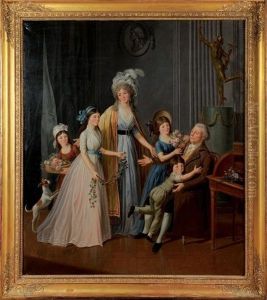Joseph Combette Paintings
Joseph Combette was a French artist known for his work as a lithographer. Born in 1829, Combette's life spanned much of the 19th century, a period that saw significant changes and developments in the art world, including the rise of lithography as a popular medium.
Lithography, invented at the end of the 18th century by Alois Senefelder, became widely used in the 19th century for reproducing images. It involves drawing on a flat stone (or metal plate in modern times) with a greasy substance and then chemically treating the stone to repel ink except where the drawing is. The image can then be printed onto paper, making it possible to produce high-quality images in large quantities.
Combette would have been part of the generation of artists who embraced this new technique. However, despite the significance of lithography during his lifetime, there is limited information readily available about Combette's personal life or his artistic career. This lack of detailed information could be due to several reasons, such as the overshadowing presence of more prominent artists of the time, poor preservation of records, or a focus on local or regional rather than national or international recognition.
What is known is that Combette's works would have been created during a vibrant period in French art history, overlapping with the late Romantic period, the rise of Realism, and the beginnings of Impressionism. In this era, artists were exploring new ways of seeing and representing the world, and lithography offered a means to disseminate their work more broadly.
Joseph Combette passed away in 1910, by which time the artistic landscape had changed significantly, with movements such as Post-Impressionism, Symbolism, and the early stages of modern art beginning to take shape. While Combette may not be as well-known as his contemporaries, his contributions as a lithographer remain a part of the rich tapestry of 19th-century French art. His works, like those of many artists of his time, would have contributed to the visual culture of the period and reflected the societal changes and aesthetic explorations that characterized the century.






